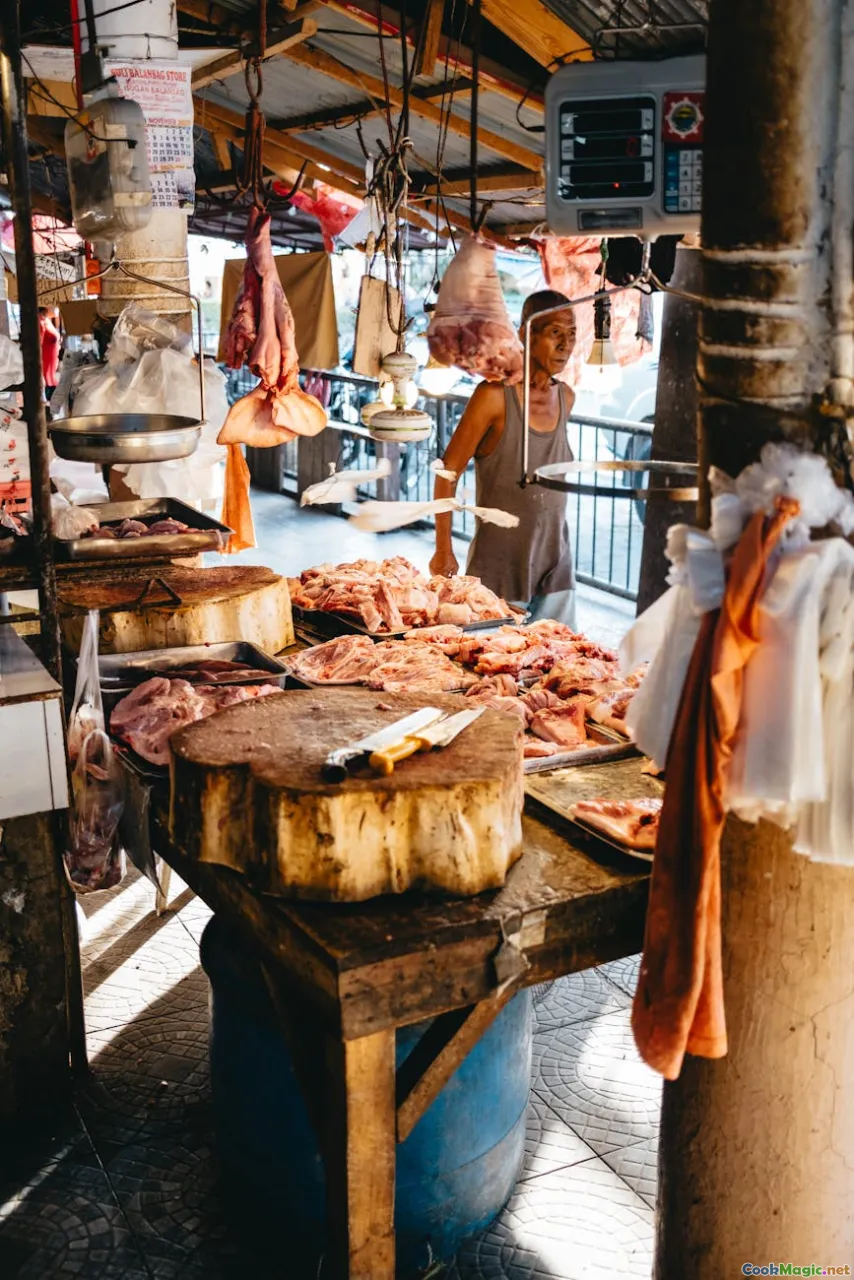The Importance of Fresh Ingredients in Dominican Cuisine
8 min read Discover how fresh, local ingredients shape the vibrant flavors and cultural richness of Dominican cuisine, elevating every dish to a sensory experience. April 27, 2025 14:55
The Importance of Fresh Ingredients in Dominican Cuisine
Imagine walking through the bustling markets of Santo Domingo at dawn, where the air is thick with the fragrant aroma of ripe plantains, freshly picked herbs, and sun-kissed vegetables. This sensory symphony is the heartbeat of Dominican cuisine, a culinary tradition deeply rooted in the land's abundant natural bounty. At its core lies a simple yet powerful truth: fresh ingredients are the soul of authentic Dominican cooking.
A Cultural Tapestry Woven with Freshness
Dominican cuisine is a vibrant tapestry woven from African, Spanish, and indigenous Taíno influences. Each thread—be it a spicy marinade, a hearty stew, or a sweet dessert—relies heavily on the availability of fresh, quality ingredients. Historically, the island’s fertile soil and tropical climate provided an endless supply of fresh produce, which shaped the local palate and culinary practices.
In rural communities, cooking was and still is a daily celebration of what's locally available. Farmers harvest bananas, yucca, and cassava; fishermen bring in fresh fish and shellfish; and markets brim with colorful peppers, herbs, and citrus fruits. This proximity to nature ensures that every meal is packed with flavor, vitality, and nutritional richness.
The Sensory Power of Freshness
Visual Appeal
A Dominican plate is a feast for the eyes—vibrant yellows of ripe plantains, fiery reds of peppers, and lush greens of cilantro and parsley. These colors are not just aesthetic; they signal the freshness and quality of ingredients, promising a burst of flavor with every bite.
Aromas and Flavors
The smell of freshly chopped cilantro mingling with grilled fish or the aroma of sweet ripe mangoes is intoxicating. Fresh ingredients retain their natural oils and fragrances, resulting in dishes that are aromatic, flavorful, and deeply satisfying.
Texture and Taste
Nothing compares to the texture of farm-fresh vegetables or fish caught at dawn. Juicy, tender, and bursting with natural juices, these ingredients elevate simple recipes such as mangu(mashed plantains),la bandera(the traditional rice, beans, and meat platter), orpollo guisado (stewed chicken). The freshness ensures a perfect balance of tenderness, crunch, and succulence.
The Role of Fresh Ingredients in Signature Dominican Dishes
Mangu and Sancocho
Mangu, a staple breakfast dish, is made from boiled green plantains mashed with butter or oil. The key is using plantains that are freshly harvested—ripe, yet firm—delivering a creamy, slightly sweet flavor. The dish is often served with eggs, cheese, or salami, where the freshness of accompaniments enhances the meal.Sancocho, the beloved hearty stew, relies on a mix of fresh meats, root vegetables, and herbs. The flavor deepens with ingredients like yuca, ñame, and corn on the cob, all of which are best when freshly picked, imparting a rich, earthy taste.
Fresh Fish and Seafood
Given the Dominican Republic’s island geography, seafood is central to its cuisine. Fish, shrimp, lobster, and conch are prepared daily, often grilled or stewed with fresh herbs and citrus. The natural sweetness of freshly caught seafood, paired with locally grown limes and cilantro, creates dishes bursting with flavor.
Fruits and Desserts
Mangosteen, papaya, passion fruit, and guava are more than just snacks; they are integral to Dominican desserts and beverages. The freshness of these fruits—often eaten straight from the tree—ensures a vibrant, juicy experience that no processed fruit can replicate.
Local Markets: Guardians of Freshness
Markets like Mercado Modelo in Santo Domingo or local village stalls are the beating hearts of the Dominican food scene. Vendors display their bounty—bright peppers, fragrant herbs, freshly caught fish, and plump tropical fruits—each item selected for peak ripeness.
Shopping here is an experience in itself; it’s about selecting ingredients with care, feeling their texture, smelling their aroma, and understanding their seasonality. This connection to the land and sea fosters a sense of culinary authenticity that is reflected in every dish.
Personal Reflections and Culinary Wisdom
Growing up in the Dominican Republic, I learned that the secret to delicious, authentic dishes is often as simple as using fresh ingredients. My grandmother’s kitchen was a sanctuary of freshly harvested herbs and vegetables, where every meal was a celebration of the land’s bounty.
One vivid memory is the aroma of freshly squeezed lime juice drizzling over grilled fish—an aroma that still transports me to those sun-drenched afternoons. It’s in these small, everyday moments that the importance of freshness becomes evident.
Modern Takes and the Preservation of Tradition
Today, chefs and home cooks alike are increasingly mindful of sourcing local, fresh ingredients to preserve the integrity of Dominican flavors. Organic markets and community-supported agriculture projects are gaining popularity, ensuring that the next generation continues to appreciate the value of freshness.
While modern techniques may evolve, the essence remains unchanged: the freshest ingredients produce the most authentic, flavorful, and nourishing dishes. They connect us to our roots, our land, and our history.
Conclusion: Celebrating Nature’s Bounty
In Dominican cuisine, freshness isn’t just a preference—it’s a tradition, a way of life. It’s about honoring the land, respecting the sea, and taking pleasure in the simple act of cooking with what nature provides. Every bite, every aroma, and every texture reflects a deep-rooted love for quality and authenticity.
So next time you indulge in a Dominican dish, remember that behind every flavorful bite lies a story of the land’s bounty—an enduring testament to the timeless importance of fresh ingredients. Embrace this freshness, and you’ll taste the true soul of the Dominican Republic in every meal.









